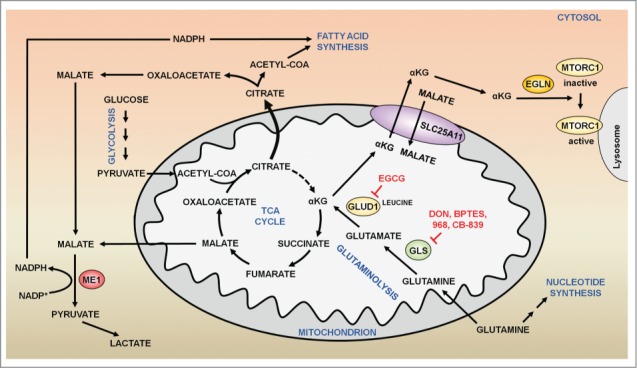Figure 1.

Glutamine metabolism and metabolic transformation. In highly proliferating cells, citrate is diverted away from the TCA cycle for the synthesis of lipids. In the cytoplasm, citrate is converted to acetyl-CoA and oxaloacetate by the enzyme ACLY (ATP citrate lyase). While acetyl-CoA is used for the synthesis of lipids, oxaloacetate is converted to malate. Cytosolic malate is converted to pyruvate and NADPH by ME (malic enzyme). GLS (glutaminase) deamidates glutamine into glutamate. Thereafter, glutamate is further deaminated by the enzyme GLUD1 (glutamate dehydrogenase 1) to yield αKG, which replenishes the TCA cycle. In addition, glutaminolytic αKG can be exported into the cytosol through SLC25A11, the mitochondrial αKG/malate carrier protein, where this metabolite activates EGLNs, which in turn activate MTORC1 to promote cell growth and anabolism. Several inhibitors of glutaminolysis (DON, BPTES) have shown a capacity to reduce MTORC1 activation and cell growth in cancer cells.
